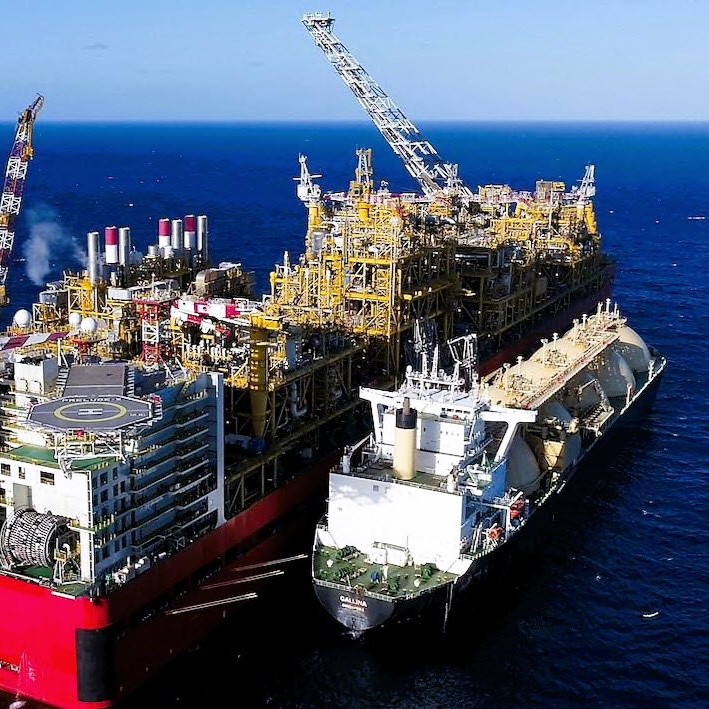Here’s an overview of the function and basic components of FLNG:
Hull: The hull is the main structure of the FLNG facility. It provides buoyancy and stability in offshore environments. The hull is designed to support the topside processing facilities and LNG storage tanks.
Topsides: The topsides are the upper part of the FLNG facility where the processing and liquefaction facilities are located. These include gas processing units, liquefaction trains, compression facilities, and other necessary equipment.
LNG Storage Tanks: FLNG facilities have onboard storage tanks to store the liquefied natural gas before transfer to LNG carriers. These tanks are typically designed to withstand the extreme conditions of the offshore environment.
Turret and Mooring System: The turret is a swiveling system that allows the FLNG facility to rotate around a fixed point. This rotation helps the facility align itself with prevailing environmental forces, such as waves and wind. The mooring system includes anchors and chains to secure the FLNG in its location.
Offloading System: The offloading system allows for the transfer of LNG from the FLNG facility to LNG carriers. It may include loading arms, hoses, or other mechanisms to ensure a safe and efficient transfer of liquefied natural gas.
Power Generation: FLNG facilities are equipped with power generation systems to supply electricity for the operation of topside facilities, processing units, and other essential equipment. Power is often generated using gas turbines or other power generation sources.
Living Quarters: Accommodation facilities are provided for the crew and operational staff. These living quarters include sleeping quarters, dining areas, recreational spaces, and other amenities for personnel working on the FLNG facility.
Helideck: An offshore helideck is included for helicopter transportation, facilitating crew changes, supply deliveries, and emergency evacuations.
Control Room and Systems: The control room houses the FLNG’s control systems, monitoring equipment, and communication systems. It serves as the central hub for managing LNG production, safety, and overall facility operations.
Gas Processing Units: Gas processing units remove impurities such as water, carbon dioxide, and contaminants from the extracted natural gas before it undergoes liquefaction.
Liquefaction Trains: Liquefaction trains are the core components responsible for cooling and liquefying the natural gas. They use refrigeration processes to bring the gas to a temperature where it transitions from a gaseous to a liquid state.
Safety Systems: FLNG facilities are equipped with various safety systems, including emergency shutdown systems, fire detection and suppression systems, life-saving equipment, and evacuation procedures.


